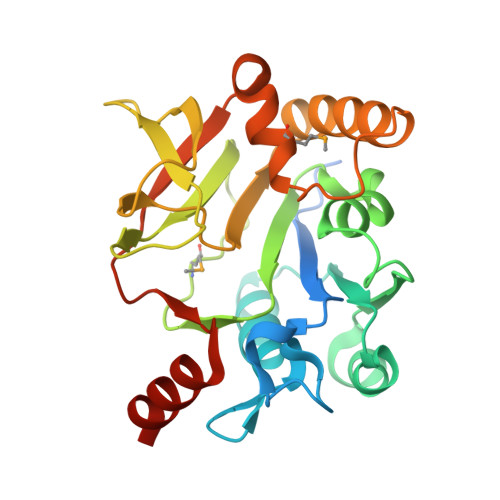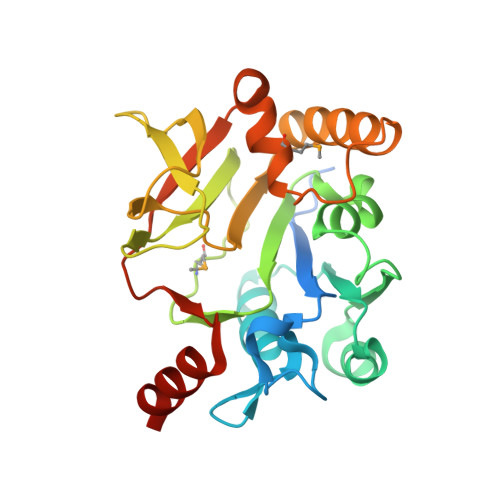Structure and mechanism of CTP:phosphocholine cytidylyltransferase (LicC) from Streptococcus pneumoniae.
Kwak, B.Y., Zhang, Y.M., Yun, M., Heath, R.J., Rock, C.O., Jackowski, S., Park, H.W.(2002) J Biological Chem 277: 4343-4350
- PubMed: 11706035
- DOI: https://doi.org/10.1074/jbc.M109163200
- Primary Citation of Related Structures:
1JYK, 1JYL - PubMed Abstract:
Pneumococcal LicC is a member of the nucleoside triphosphate transferase superfamily and catalyzes the transfer of a cytidine monophosphate from CTP to phosphocholine to form CDP-choline. The structures of apo-LicC and the LicC-CDP-choline-Mg(2+) ternary complex were determined, and the comparison of these structures reveals a significant conformational change driven by the multivalent coordination of Mg(2+). The key event is breaking the Glu(216)-Arg(129) salt bridge, which triggers the coalescence of four individual beta-strands into two extended beta-sheets. These movements reorient the side chains of Trp(136) and Tyr(190) for the optimal binding and alignment of the phosphocholine moiety. Consistent with these conformational changes, LicC operates via a compulsory ordered kinetic mechanism. The structures explain the substrate specificity of LicC for CTP and phosphocholine and implicate a direct role for Mg(2+) in aligning phosphocholine for in-line nucleophilic attack and stabilizing the negative charge that develops in the pentacoordinate transition state. These results provide a structural basis for assigning a specific role for magnesium in the catalytic mechanism of pneumococcal LicC.
Organizational Affiliation:
Department of Structural Biology and the Protein Science Division, St. Jude Children's Research Hospital, Memphis, Tennessee 38105, USA.



















